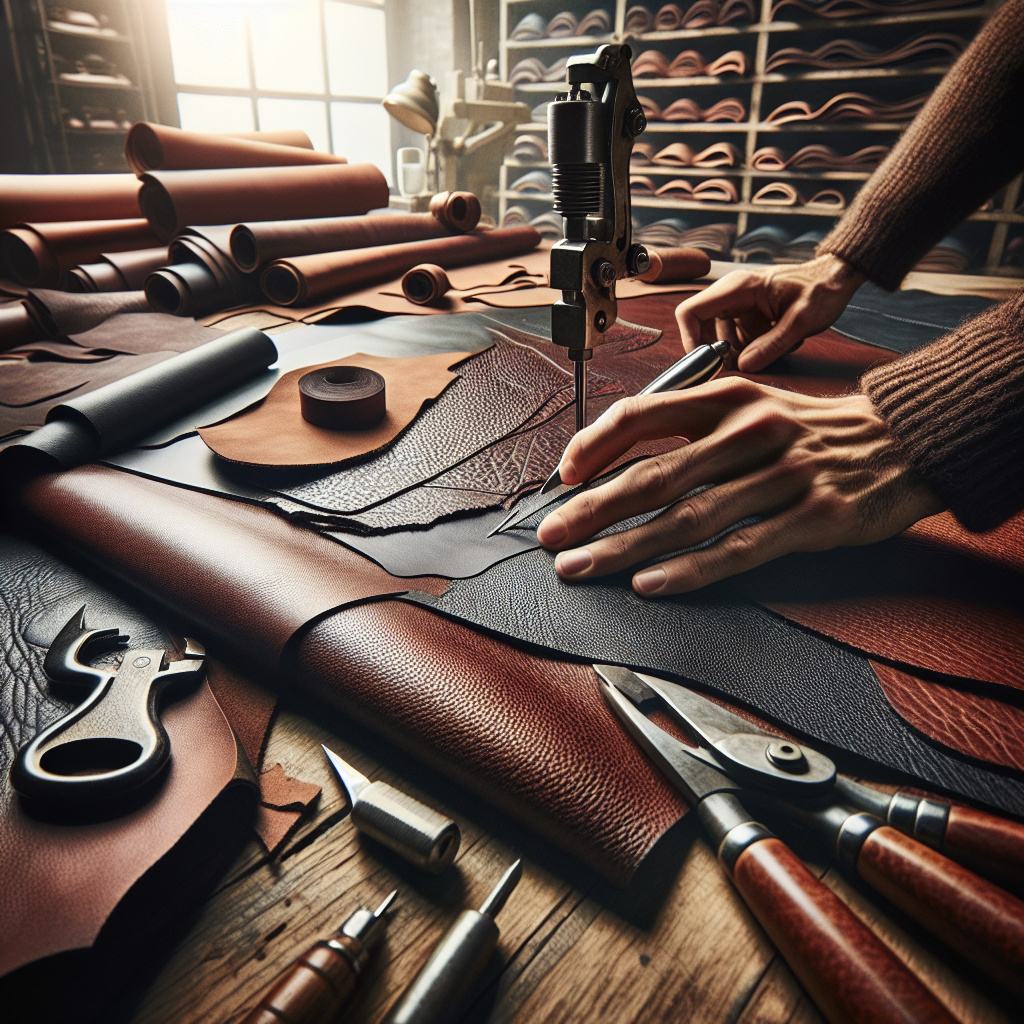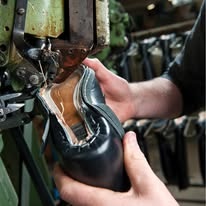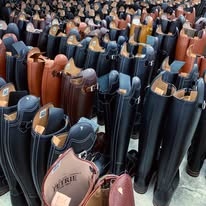Introduction to the production process of Petrie riding boots
Discover the production process of Petrie riding boots in the Netherlands here

The production process of Petrie riding boots involves a careful series of steps that ensure the high quality and comfort for which the brand is known. It starts with the design, which focuses on functionality, comfort, and aesthetic appeal. After the design, high-quality materials are selected; leather and synthetic fabrics are often the cornerstones of this process, as they contribute to the durability and overall experience of the wearer. Next, patterns are created based on the designs, which serve as templates for cutting the various parts of the boots. The cutting of the materials can be done either manually or by machine and is crucial for a precise fit. After cutting, the assembly process begins, in which the cut parts are sewn or glued together, often with additional linings and internal structures for extra support. The soles are then attached to the boots, which is essential for grip and stability while riding. After assembly, the boots enter the finishing stage, where they are polished and treated to achieve the desired look and finish. Extensive quality control is also an important part of the process; each pair of boots is carefully inspected to ensure that they meet the requirements for comfort and durability. Finally, the perfectly finished boots are packaged and prepared for shipment to retailers or end consumers. This structured production process ensures that Petrie riding boots are not only stylish, but also offer the quality and performance that riders expect!

Raw Materials for Petrie Riding Boots
Petrie riding boots are renowned for their high quality, which stems primarily from the use of carefully selected raw materials. The production process begins with choosing the right materials, which are essential for both the durability and comfort of the boots. High-quality leather, often sourced from both foreign and local suppliers, forms the basis of these riding boots. This leather is not only strong, but also offers a luxurious look and an excellent fit that adapts to the foot. In addition to traditional leather, synthetic fabrics are also used, which offer advantages such as waterproofing and extra flexibility, making them suitable for different riding conditions. Breathable and moisture-regulating materials are often used for the inner lining of the boots, increasing comfort during prolonged use. In addition, innovative materials and technologies are used, such as elastic elements that provide extra freedom of movement and support. The pattern-making process is also crucial: each design requires precise patterns that are able to reflect the unique shapes of the foot, contributing to an optimal fit. These patterns are then used to cut the various parts of the boot from the selected materials, a process that can be done either manually or by machine. The bonding of the various components, often using powerful sewing and gluing techniques, ensures that the boots are both robust and comfortable. The quality of the soles is also of great importance; these are made from wear-resistant rubber or leather, which contributes to grip and stability while riding. To ensure aesthetic value, the boots undergo a final finishing stage, in which they are polished or given a specific texture. This careful finishing, together with thorough quality control, ensures that every boot that leaves the factory meets the high standards that Petrie's customers expect.

Cutting Leather for Riding Boots
Cutting leather for riding boots is a crucial step in the production process, where precision and attention to detail are of the utmost importance. The process begins with the creation of patterns based on the designs of the boots. These patterns serve as templates for cutting the various parts of the riding boot, such as the shaft, the footbed, and the back. High-quality leather, selected for its durability and flexibility, is then carefully cut according to these patterns. Cutting can be done either by hand or using automated machines, depending on the manufacturer's production methods. When the leather is cut by hand, craftsmanship is essential; the skill of the cutters directly influences the final fit and appearance of the boots. Machine cutting can increase the speed and efficiency of the process, but it also requires proper maintenance of the machines to ensure accuracy. The cut pieces of leather are then checked for damage and irregularities to ensure that only the best quality is used for assembly. Proper leather cutting also affects the final aesthetics of the boots; it must be in line with the intended style and functionality of the design. This includes taking into account factors such as the grain of the leather and cutting along the natural lines of the material to ensure a seamless appearance. It is crucial that the cutting techniques do not weaken the leather, as this can affect the quality and longevity of the boots. Some of the most common techniques used in cutting include the use of cutting machines set to the patterns and manual cutting with knives for more delicate parts. After cutting, the parts are ready for the next step in the production process: assembly and finishing, where they are manufactured into a complete product.


